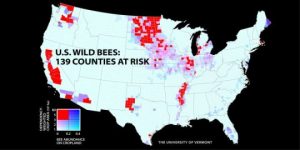The post Celebrate All Pollinators appeared first on Neem.World.
]]>What is pollination? Pollination is when pollen grains are moved from one flower to another of the same species, resulting in fertilization. This can happen by wind or pollinators! Successful pollination can even require multiple pollinators to visit the same flowers.
Vital to humanity’s survival, pollinators are responsible for an estimated one third of all food products. These pollinators add $20 billion to the food industry in the United States alone. Some crops that rely on these beneficial animals include corn, coffee, blueberries, melons, peaches, pumpkins, and even chocolate!
Pollination enables 40% of the world’s crops and 90% of our wild plants to thrive. It’s important to remember that not all pollinators are bees. There are roughly 1,000 beneficial vertebrae species (birds, bats and other small mammals). Another 200,000 species are beneficial insects such as bees, flies, wasps, and beetles. Though a large focus is put on the pollination benefits of bees due to recent news about synthetic pesticides causing a decline in their populations, we should not forget that many other pollinator species are also effected.
How can you protect pollinators?
You can reduce your impact by eliminating synthetic pesticide use. If you need to use pesticides, make sure that they are natural and pollinator-safe, like neem-based pesticides.
You can also plant for pollinators by creating pollinator-friendly habitats that teem with nectar and pollen.
Spread the word! Make sure that everyone is aware of the dangers for pollinators, including conventional agriculture, and encourage others to practice more sustainable methods in their daily lives!
The post Celebrate All Pollinators appeared first on Neem.World.
]]>The post Declining Bee Populations appeared first on Neem.World.
]]>Native and wild bees are vital for the future of agriculture. Each year, $3 billion of the United States economy depends on native pollinators. Many of these pollinator-dependent crops are not only helped by managed colonies, but also by wild bees. The over 4,000 species of bees in the US complement new systems of managed pollinators, created in large part to protect and ensure our agricultural success in the future.
Even though these controlled pollinators are important to agriculture, wild bees pollinate many crops, in particular specialty crops such as almonds, blueberries, apples, peaches, and watermelons. On a global scale, pollinators support over 2/3 of the world’s crops. These crops either benefit or require pollination to grow, including important exportation crops like coffee and cacao!
Source: Proceedings of the National Academy of Sciences
In a map created by researchers from UVM, Franklin and Marshall College, the University of California at Davis, and Michigan State University, the bee habitats throughout the US were identified and marked. What they found is a frightening reality: in critical agricultural areas of the United States, 139 counties have worrisome falling wild bee populations, paired with rising crop pollination demand. One of the most sobering revelations is that California’s Central Valley – one of the most productive agricultural regions in the world where over 50% of the United States’ fruits, vegetables and nuts are grown – needs a large amount of bees in an area where bee populations are simply decreasing. If this area did not have bees, domestic food supply would decrease, raising food prices and hurting consumers and farmers!
How can we prevent this? By using pollinator-safe tactics in agriculture, like neem-based natural pesticides and fertilizers. Neem is a powerful tool to counteract the declining bee population trend, as neem’s compounds are non-toxic to pollinators since it is only effective against pests that consume the product. As bees do not eat the leaves of the plant, they stay safe and healthy, ready to pollinate plants and feed the world!
The post Declining Bee Populations appeared first on Neem.World.
]]>